Politics
In UML split, Maoist Centre sees chance at regaining its relevance
As Madhav Nepal moves to register new party, the former rebel party, under threat of being wiped out of political scene, appears to be major beneficiary besides Congress.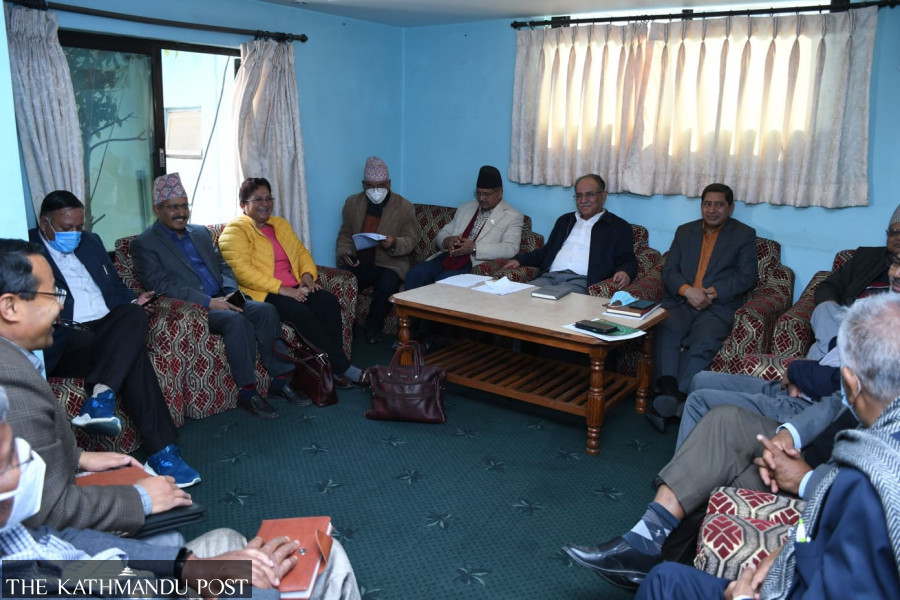
Tika R Pradhan
Once registered with the Election Commission, Madhav Nepal’s CPN (Unified Socialist) party is most likely to extend support to the Sher Bahadur Deuba government, in return for some ministerial berths. Nepal has already applied for registration after splitting from the CPN-UML, which he led for 15 years from 1993 to 2008. Nepal’s decision to part ways with KP Sharma Oli, the UML chair, makes Deuba, or the Nepali Congress for that matter, the beneficiary.
However, in the long run, the party that is going to benefit is the Communist Party of Nepal (Maoist Centre) and the leader that is going to have a field day is its leader Pushpa Kamal Dahal.
After the Supreme Court on March 7 revived the Maoist Centre and the UML, invalidating the Nepal Communist Party (NCP) they had formed in May 2018 after a merger, Dahal was looking for a plank for survival. Competing with a strong UML, which has a strong organisational base across the country at various levels, during elections would have been an uphill task for Dahal.
Observers say while the Nepali Congress is likely to make a comeback after its massive loss in the 2017 elections as the first party due to the UML split, the Maoist Centre can make an attempt to prove its relevance.
“A split in the UML was Dahal’s interest, rather than Deuba’s. That’s why Maoist chair Dahal was making a push for it,” said Lok Raj Baral, a professor of political science. “There is a realisation in the Maoist Centre that its relevance is over and it does not have any agenda to sell during the elections.”
According to Baral, the Maoist Centre now will try to forge an alliance with Nepal as well as the Janata Samajbadi Party led by Upendra Yadav and Baburam Bhattarai.
“It’s always good for parties like the Maoist Centre when the direct competitor is weakened,” said Baral.
The Maoist Centre has already launched initiatives to explore the possibilities of forging a left alliance with like-minded forces.
On Sunday, the party’s Standing Committee meeting decided to forge unity of revolutionary forces, if possible, or at least an alliance, after strengthening the party’s organisational structures.
“Actually we did not want to part ways and remain as Nepal Communist Party,” said Haribol Gajurel, a Standing Committee member of the Maoist Centre. “It was the court that forced our split. So we will again join hands with Madhav Nepal.”
Though Nepal has applied for CPN (Unified Socialist) at the Election Commission, a seasoned politician like him is well aware of the fact that making it a strong party for the upcoming elections is a herculean task. While local elections are just seven months away, general elections will be held in about 14 months.
Historically also, breakaway communist factions have fared badly in elections. One of the examples is the CPN-ML.
In 1997, Bamdev Gautam, a long-time communist leader, had broken away from the UML to form the CPN-ML. After failing to win a single seat in the 1999 elections, Gautam returned to the mother party, UML. CP Mainali, however, decided to remain in the CPN-ML, but it is nowhere to be seen in Nepali politics.
It will take a while before Nepal’s CPN (Unified Socialist) comes up with its party ideology and agenda. And if it continues to follow what the UML follows, it will hardly have anything to tell the public when during the election campaign, according to observers.
Despite deciding to form a different party, Nepal himself has not ruled out alliance possibilities, even with Oli’s UML.
Observers say Oli might not be much wary of possible alliances between Dahal and Nepal, as he feels confident about his UML’s strong organisational base. During the polls, the UML’s direct fight will be with the Nepali Congress. Oli still has some agenda items up his sleeve, including the new Nepal map that his government had unveiled in May last year. Oli may not hesitate to resort to Hindutva–he has already given some indications–an issue that strikes a chord with a sizeable section of voters.
And there is an anti-incumbency factor, which could come to Oli’s advantage.
“I don’t think the Nepali Congress will be able to cash in on the opportunity provided by the split in the UML, given the tendency of its leaders,” said Baral. “Much depends on how Deuba fares in governance.”
So in the fight between the UML and the Nepali Congress, Dahal sees a chance for stealing some constituencies. The 2013 Constituent Assembly elections came as a hard lesson for Dahal, as his party was relegated to the third party, just five years after emerging as the single largest party in 2008.
The Nepali Congress and the Maoist Centre had formed an alliance in the past too, but after the first phase of local elections in 2017, Dahal decided to lean on the UML. For the Nepali Congress, sharing constituencies with any other party is not easy because of the sheer number of aspirants. And Dahal knows this well.
For Dahal’s Maoist party, contesting the elections on its own also won’t be easy. That’s why Dahal was desperately trying to break the UML.
“Even if the Congress emerges victorious, it is unlikely to secure a majority in the upcoming polls,” said Krishna Pokharel, who teaches political science at the Tribhuvan University. “Oli’s UML and other left parties in the current coalition will fight for the second and third positions.”
The Maoist Center which was looking at a hopeless future after it was revived now is heaving a sigh of relief after the split in the UML, as it has found some breathing space.
During the party’s Central Committee meeting, which concluded on August 15, Dahal, according to insiders, himself had admitted that they were on the verge of losing significance.
“If we continue with our current activities, this party will be of no use. Communist parties in the world have fallen,” a central committee member quoted Dahal as saying at the meeting. “If we cannot be honest with our principles and people of our class, we should rather involve ourselves in some research work or start writing books by dissolving the party.”
According to Pokharel, there could be two possible alliances in the country by the next elections–one left alliance of the Maoist Centre, Nepal’s CPN (Unified Socialist) and Bhattarai-Yadav’s Janata Samajbadi Party (JSP) and the other of Oli’s UML, Rastriya Prajatantra Party and Mahantha Thakur’s Loktantrik Samajbadi Party.
Since the Congress and the UML have their consistent vote shares, the Maoist Centre will try to take benefit from the gaps created by the splits in the UML and the JSP.
“The UML split in particular could also give rise to a left alliance of a sizeable size that can have a significant influence in the country’s politics,” said Pokharel. “Politically, the Maoist Centre is the beneficiary, as it will try to assert its relevance.”




 13.12°C Kathmandu
13.12°C Kathmandu


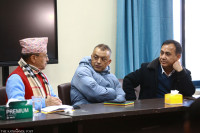
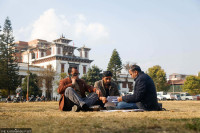
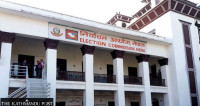


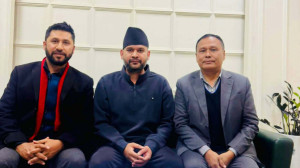





%20(1).jpg&w=300&height=200)

